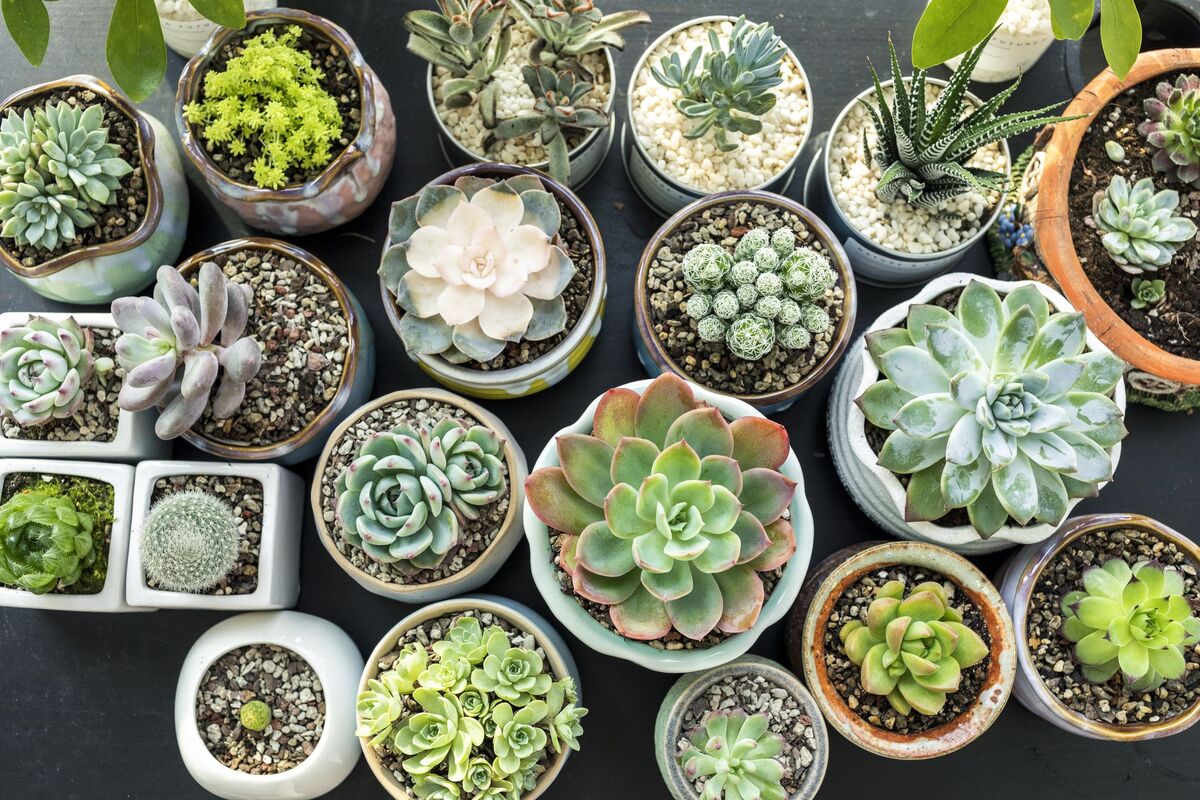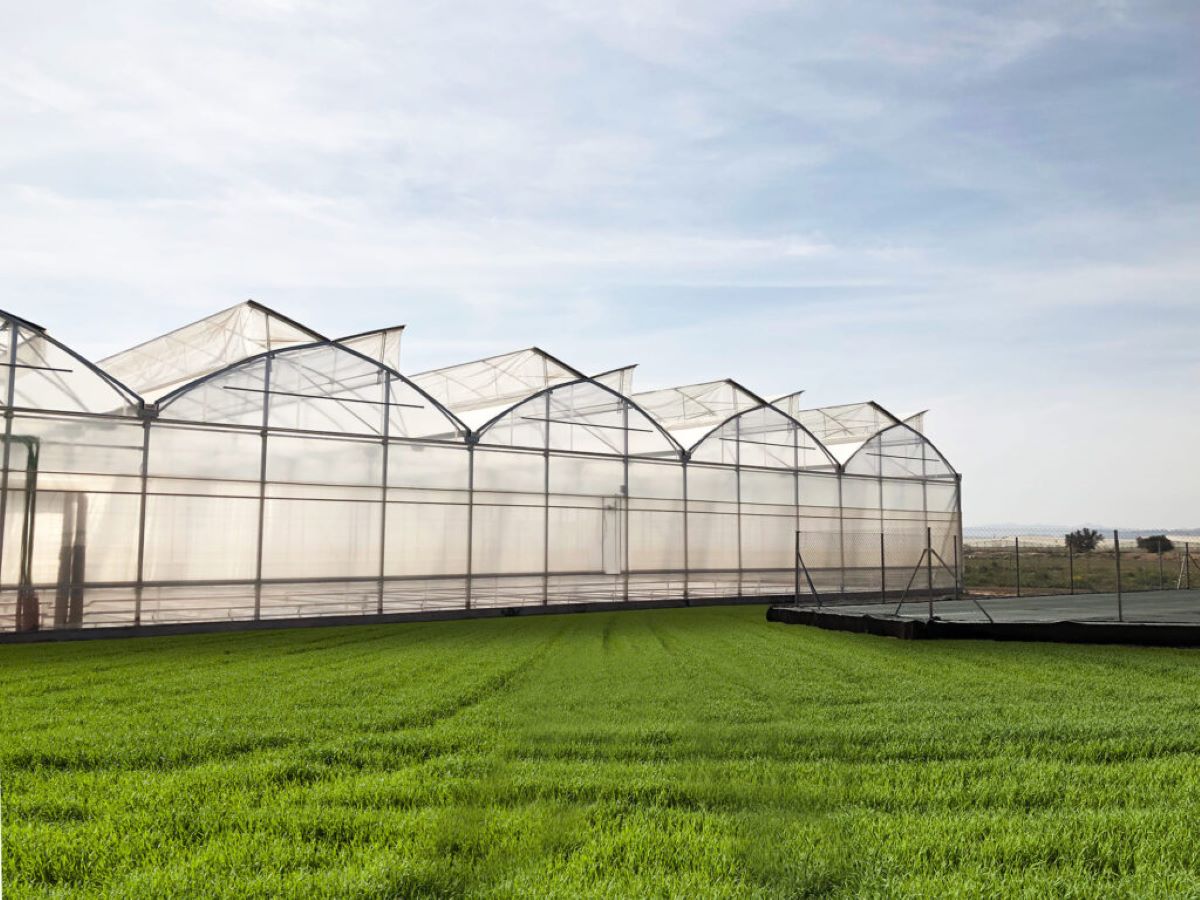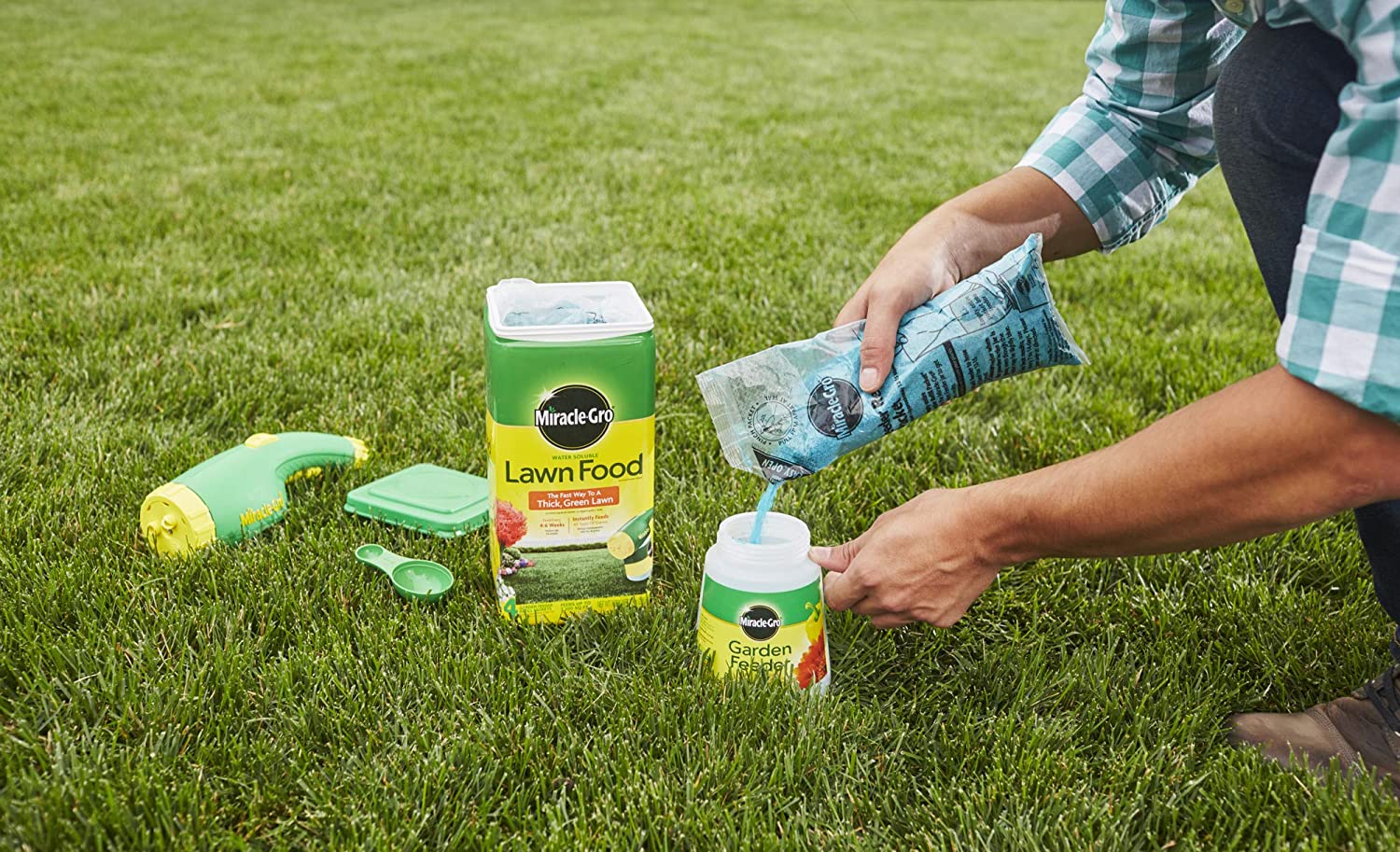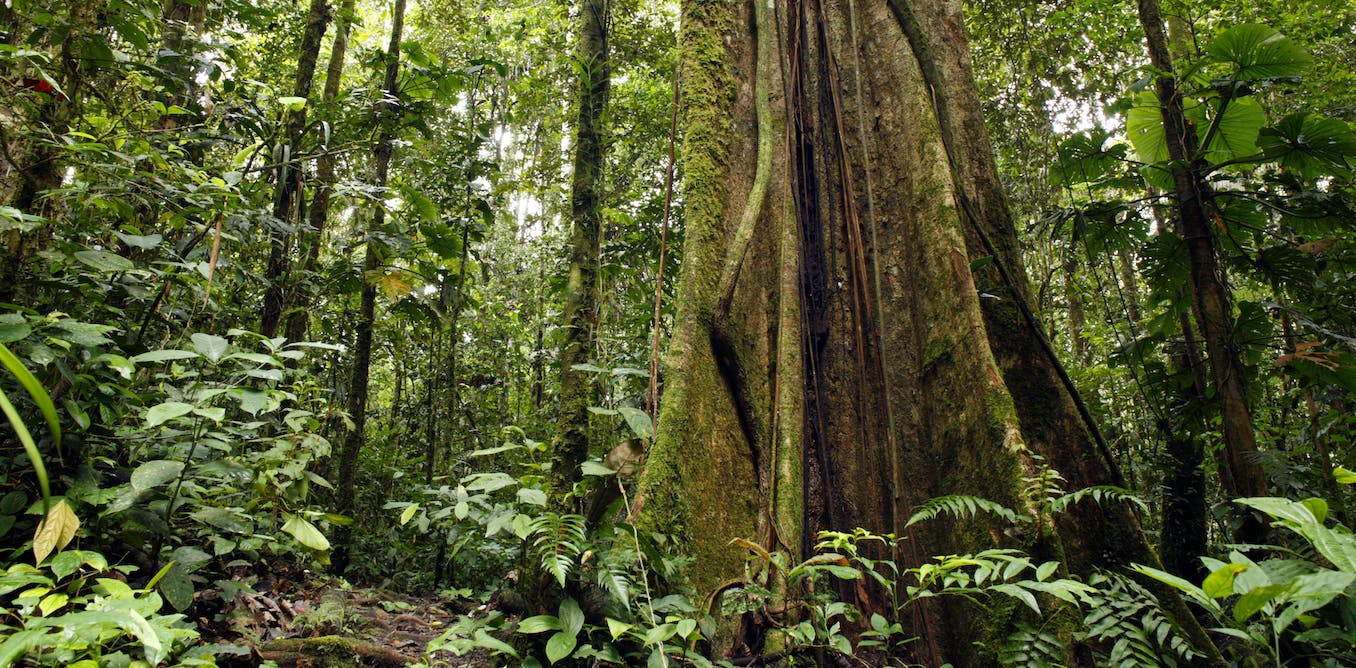Home>Types of Gardening>Ornamental Gardening>What Kind Of Plants Are Succulents


Ornamental Gardening
What Kind Of Plants Are Succulents
Modified: February 10, 2024
Discover the beauty of succulents in ornamental gardening. Learn about the different types of succulent plants and how to care for them.
(Many of the links in this article redirect to a specific reviewed product. Your purchase of these products through affiliate links helps to generate commission for Chicagolandgardening.com, at no extra cost. Learn more)
Table of Contents
Introduction
Welcome to the fascinating world of succulents! If you’re someone who appreciates the beauty of ornamental plants and enjoys gardening, then succulents are sure to capture your attention. These unique plants have gained immense popularity in recent years, and it’s not hard to see why. With their striking appearance, ability to thrive in various environments, and minimal care requirements, succulents have become the go-to choice for both seasoned gardeners and beginners alike.
Succulents are a diverse group of plants that have adapted to survive in arid and semi-arid regions around the world. They are known for their fleshy leaves, stems, or roots that store water, allowing them to endure long periods of drought. The name “succulent” derives from the Latin word “succus,” which means sap or juice, highlighting the plant’s ability to retain moisture.
What sets succulents apart from other plants is their unique feature of water storage. This adaptation not only enables them to survive in harsh environments but also gives them their iconic plump appearance. The thick, fleshy leaves or stems of succulents contain specialized structures called water-storing cells, which allow the plant to retain water for extended periods. This characteristic makes succulents not only visually appealing but also incredibly resilient.
One of the most attractive aspects of succulents is the sheer variety of species and cultivars available. From tiny and delicate to large and imposing, there is a succulent for every taste and space. Whether you prefer spiky and architectural shapes or the soft rosettes of leaves, you’ll find a succulent that suits your aesthetic preferences.
Whether you’re a seasoned gardener looking to expand your collection or a beginner looking to add some greenery to your indoor or outdoor space, learning about succulents is the first step towards nurturing these fascinating plants. In this comprehensive guide, we’ll delve into the world of succulents and explore their various types, growing and care tips, common challenges, and their uses in landscaping and decorations.
Definition of Succulents
Succulents are a group of plants that have evolved to store water in their leaves, stems, or roots. This unique adaptation allows them to survive in dry and arid environments where water is scarce. The term “succulent” is derived from the Latin word “succus,” which means sap or juice, referring to the plants’ ability to retain water within their tissues.
One of the defining characteristics of succulents is their fleshy or succulent nature. They have thick, swollen leaves or stems that can store large amounts of water. This water storage mechanism enables succulents to survive in conditions where other plants would wither and die.
Succulents are primarily found in regions with low rainfall and high temperatures, such as deserts and arid climates. They have evolved over time to adapt to these harsh conditions by developing specialized structures for water storage. These structures can vary depending on the species, but common examples include modified leaves, stems, or tuberous structures that store water.
It is important to note that the term “succulent” is not limited to a specific plant family or genus. Succulents can be found in a wide range of plant families, including but not limited to the Crassulaceae, Euphorbiaceae, and Agavaceae. This diversity means that succulents can display a wide variety of shapes, sizes, and growth habits.
In addition to their water storage adaptations, succulents also have unique growth habits. Many succulents have a slow growth rate, which allows them to conserve energy and resources in their harsh environments. Some succulents also have the ability to propagate through vegetative means, such as producing offsets or developing new plants from their leaves or stems.
Overall, succulents are fascinating plants that have evolved remarkable adaptations to survive in arid regions. Their ability to store water and their striking appearance make them a popular choice for both indoor and outdoor gardens. In the following sections, we will explore the features, types, and care tips for these incredible plants.
Features of Succulent Plants
Succulent plants possess several unique features that set them apart from other types of plants. These features enable them to thrive in arid and semi-arid environments, making them an excellent choice for low-water gardens and indoor spaces. Here are some key features of succulent plants:
- Fleshy leaves, stems, or roots: Succulents have specialized tissues that can store water. This water storage capacity is primarily attributed to their fleshy leaves, stems, or roots. These structures are capable of storing large amounts of water, allowing succulents to survive prolonged periods without rainfall.
- Drought tolerance: Succulents are highly adapted to drought conditions. Their ability to retain water allows them to withstand extended periods of low water availability. This trait makes them resilient and well-suited for environments with limited rainfall or where regular watering is difficult.
- Reduced leaf surface area: Many succulent species have small or reduced leaves compared to other plants. This adaptation helps minimize water loss through transpiration, as the reduced leaf surface area reduces the potential for water evaporation. Instead of relying on traditional broad leaves for photosynthesis, succulents often rely on specialized structures within their leaves, such as water-storing cells or chloroplast-rich tissues.
- Thick cuticles: Succulents have thick, waxy cuticles on their leaves and stems. These cuticles act as a protective layer, reducing water loss through evaporation. The thick cuticles provide a barrier that helps retain moisture within the plant and minimize the impact of arid conditions.
- Ability to tolerate high light intensity: Succulents are usually well-adapted to thriving in bright and sunny locations. Many succulent species can tolerate high light intensity, which is advantageous in their natural desert habitats. However, it’s important to note that while succulents can tolerate bright light, some species may suffer from sunburn if exposed to excessive direct sunlight.
- Wide range of colors and textures: Succulents come in a dazzling array of colors and textures, ranging from vibrant greens to striking reds and purples. Some succulents have textured leaves or stems, such as fuzzy or spiky surfaces, adding to their visual appeal. The wide variety of colors and textures allows for endless creative possibilities when incorporating succulents into landscaping or indoor decor.
These distinctive features make succulent plants not only visually appealing but also well-suited for challenging growing conditions. With their water storage capacity, drought tolerance, and unique adaptations, succulents provide a delightful and low-maintenance option for both experienced and novice gardeners.
Types of Succulents
Succulents encompass a wide range of plant species and varieties, each with its own unique characteristics and appearances. While it is impossible to cover every type of succulent in this article, let’s explore some of the most popular and diverse types of succulents:
- Agave: Agave plants are known for their striking rosette shapes and sharp-pointed leaves. They come in a variety of sizes and colors, with some species having variegated foliage. Agave plants are native to arid regions of Mexico and the southwestern United States.
- Aloe: Aloe vera is one of the most well-known succulents. The gel found in its leaves has medicinal properties and is commonly used in skincare products. Aloe plants have thick, fleshy leaves arranged in a rosette pattern. They are native to Africa and are renowned for their ability to withstand drought conditions.
- Echeveria: Echeveria are popular succulents with rosette-shaped leaves that come in an array of stunning colors. They are native to Mexico and are often used in garden beds, containers, and decorative arrangements. Echeverias are known for their symmetry and are highly sought after by succulent enthusiasts.
- Sedum: Sedums, also known as stonecrops, are versatile succulents that come in a variety of shapes, sizes, and colors. They are known for their ability to tolerate different growing conditions and are commonly used in rock gardens and green roofs. Sedums are easy to propagate, making them a great choice for beginners.
- Haworthia: Haworthias are small succulents that are native to southern Africa. They have distinctive, textured leaves arranged in a rosette or spiral pattern. Haworthias are well-suited for indoor cultivation due to their compact size and tolerance for lower light levels.
- Sempervivum: Sempervivums, also known as “hen and chicks,” are hardy succulents that form rosettes with offsets, known as “chicks,” around a central plant, the “hen.” They come in a variety of colors and are commonly used in rock gardens and container arrangements.
- Kalanchoe: Kalanchoes are popular succulents with vibrant flowers. They have thick leaves and are native to Madagascar and other parts of Africa. Kalanchoes are often grown as houseplants and can be easily propagated from leaf or stem cuttings.
- Crassula: Crassulas are diverse succulents with a wide range of leaf shapes, sizes, and growth habits. Some species have trailing stems, while others grow as compact rosettes. Crassulas are commonly used in succulent arrangements and are easy to care for.
These are just a few examples of the countless types of succulents available. Exploring the diverse world of succulents is an adventure in itself, as you discover the unique characteristics and beauty of each species. Whether you prefer the architectural forms of agaves, the delicate rosettes of echeverias, or the charming clusters of sedums, there is a succulent to suit every taste and gardening style.
Growing and Care Tips for Succulents
Succulents are known for their resilience and ability to thrive in various growing conditions. However, providing the right care will help your succulents reach their full potential and keep them looking healthy and vibrant. Here are some key tips for growing and caring for succulents:
- Light: Succulents generally require bright light to thrive. Place them in a location where they can receive at least 6-8 hours of direct or indirect sunlight per day. However, be cautious of intense afternoon sun, as some succulents can scorch under excessive heat and light.
- Watering: Succulents are adapted to drought conditions and prefer dry soil. Allow the soil to dry out completely between waterings, and then water thoroughly until water drains out of the pot’s drainage holes. Overwatering can lead to root rot, so it’s essential to strike a balance and avoid waterlogged soil.
- Soil: Use a well-draining soil mix specifically formulated for succulents and cacti. Good soil drainage is crucial to prevent waterlogged conditions that can cause root rot. You can also make your own succulent soil mix by combining potting soil with perlite or sand to improve drainage.
- Container: Plant your succulents in containers with drainage holes to facilitate water drainage. This helps prevent waterlogging and ensures that the roots do not sit in saturated soil. Terracotta pots are ideal for succulents, as they allow for better airflow and moisture evaporation.
- Temperature and Humidity: Most succulents thrive in warm temperatures ranging from 65°F to 85°F (18°C to 29°C). They can tolerate low humidity, making them suitable for both indoor and outdoor environments. However, some succulents with tropical origins may appreciate slightly higher humidity levels.
- Fertilization: Succulents have relatively low nutrient requirements. Use a balanced, slow-release fertilizer diluted to half strength during the growing season (spring and summer). Avoid over-fertilizing, as this can lead to weak growth or damage to the plant.
- Pruning and Propagation: Remove any dead or decaying leaves or stems to maintain the overall health and appearance of the succulent. Many succulents can also be propagated easily through stem or leaf cuttings, allowing you to expand your collection or share plants with others.
- Protection from Frost: While some succulents can tolerate light frost, most are not frost-tolerant. If you live in an area with cold winters, consider bringing your succulents indoors or providing them with protection, such as placing them under a frost cloth or in a greenhouse.
Remember, each succulent species may have specific care requirements, so it is essential to research the specific needs of your succulents. Observation is key – monitor your plants for any signs of stress or problems, such as wilting or discoloration, and adjust your care routine accordingly.
By following these basic care tips, you can create an optimal environment for your succulents to thrive. Enjoy the journey of growing and tending to these fascinating plants, and witness the beauty and resilience they bring to your garden or indoor space.
Common Succulent Varieties
The world of succulents is incredibly diverse, with countless varieties to choose from. Each succulent variety has its own unique characteristics, growth habits, and visual appeal. Let’s explore some of the most common and beloved succulent varieties:
- Hens and Chicks (Sempervivum): These popular succulents feature rosettes with offsets, or “chicks,” growing around a central plant, the “hen.” They come in various colors and can be grown both indoors and outdoors.
- Jade Plant (Crassula ovata): Jade plants are known for their fleshy, oval-shaped leaves and tree-like growth habit. They are relatively low-maintenance and can thrive in a variety of environments.
- Echeveria: With their stunning rosette-shaped foliage, echeverias are highly sought after by succulent enthusiasts. They come in a wide array of colors, from vibrant greens to pastel pinks and purples.
- Agave: Agave plants are known for their striking architectural forms and sturdy spiky leaves. They can vary in size, from small rosettes to large, imposing plants.
- Aloe vera: Aloe vera is a well-known succulent with medicinal properties. It has fleshy, toothed leaves and produces tall flower spikes adorned with vibrant orange or yellow flowers.
- Kalanchoe: Kalanchoes are popular flowering succulents that come in various vibrant colors, such as red, orange, pink, and yellow. They produce clusters of colorful blooms and are often grown as houseplants.
- Sedum: Sedums are versatile succulents with diverse growth habits. They can be groundcovers, trailing plants, or have upright forms. Sedums also come in a range of colors and textures.
- Haworthia: Haworthias are small succulents known for their architectural rosette shapes and intricate patterns on their leaves. They are popular for indoor cultivation due to their compact size.
- String of Pearls (Senecio rowleyanus): This unique trailing succulent has elongated, bead-like leaves that resemble a string of pearls. It is a captivating plant that can be grown in hanging baskets or as a trailing accent in arrangements.
- Panda Plant (Kalanchoe tomentosa): The Panda Plant is a charming succulent with soft, fuzzy leaves that feature brownish-red spots. It is a low-growing variety and is often used in indoor gardens or as a decorative accent.
These are just a few examples of the many succulent varieties available. Each variety has its own distinct characteristics, making succulents a wonderful choice for adding visual interest and diversity to your garden or indoor space.
Uses of Succulents in Landscaping and Decorations
Succulents have gained significant popularity in recent years due to their versatile nature and visual appeal. Their unique features and ability to thrive in various growing conditions make them ideal choices for landscaping and decorations. Here are some common uses of succulents in landscaping and decorative settings:
- Drought-Tolerant Gardens: Succulents are perfect for creating low-water or drought-tolerant gardens. Their ability to store water in their leaves or stems allows them to survive in arid conditions. Incorporating succulents into your garden not only adds beauty but also conserves water resources.
- Xeriscaping: Xeriscaping is a landscaping technique that focuses on water conservation. Succulents play a key role in xeriscaping due to their low water requirements. Using succulents in xeriscape designs helps reduce water usage and create visually striking, low-maintenance landscapes.
- Rock Gardens: Succulents thrive in rock gardens, creating beautiful and visually appealing displays. Their unique textures, colors, and shapes complement rocks and boulders, providing interest and contrast. Succulents also work well alongside other low-water plants in rock garden designs.
- Living Walls: Succulents can be used to create stunning living walls or vertical gardens. Their ability to grow in limited amounts of soil makes them ideal for vertical planting systems. Living walls filled with succulents can serve as striking focal points and add a touch of greenery to urban areas.
- Container Gardens: Succulents are well-suited for container gardens due to their compact size and low water requirements. They can be planted in various containers, such as pots, troughs, or even repurposed objects. Container gardens with succulents can adorn outdoor patios, balconies, and indoor spaces, adding a charming and low-maintenance touch of nature.
- Indoor Decor: Succulents make excellent indoor decor plants, adding a touch of nature and greenery to any space. They can thrive in indoor conditions with moderate light levels and low humidity. Succulents come in a variety of sizes and shapes, allowing you to choose plants that fit your interior style and preferences.
- Wedding and Event Decorations: Succulents have become popular choices for wedding and event decorations. They can be incorporated into floral arrangements, bouquets, centerpieces, and even used as wedding favors. Succulents’ unique shapes and colors add a fresh and eye-catching element to special occasions.
- Terrariums and Fairy Gardens: Succulents are often used in creating miniature landscapes within terrariums or fairy gardens. Their small size and ability to thrive in enclosed spaces make them perfect for these whimsical plant arrangements. Succulents bring an element of enchantment and natural beauty to these miniature worlds.
From water-wise landscaping to indoor decor, succulents offer endless possibilities for enhancing spaces with their beauty, versatility, and low maintenance requirements. Whether you prefer a garden filled with a variety of succulent species or a single statement plant for your home, succulents will surely bring a touch of nature and elegance to any setting.
Common Challenges in Succulent Care
While succulents are generally low-maintenance and resilient plants, they still require proper care to thrive. Understanding and addressing common challenges in succulent care will help ensure the health and longevity of your plants. Here are some challenges to be aware of when caring for succulents:
- Overwatering: One of the most common issues with succulent care is overwatering. Succulents are adapted to survive in arid conditions and have low water requirements. Overwatering can lead to root rot and other health problems. It’s crucial to allow the soil to dry out between waterings and avoid keeping the soil continuously moist.
- Poor Drainage: Succulents thrive in well-draining soil. If the soil in their containers or planting beds doesn’t drain properly, it can cause water to accumulate around the roots, leading to rot. Ensure that your succulents are planted in pots or beds with adequate drainage holes and use a well-draining soil mix.
- Lack of Light: While succulents can tolerate bright light conditions, inadequate light can lead to weak growth and stretching of the plant. If your succulents are not receiving enough light, they may become leggy or lose their vibrant colors. Place them in a location where they can receive at least 6-8 hours of bright, indirect sunlight per day.
- Frost Damage: While some succulents can tolerate light frost, most are not frost-tolerant. Exposure to freezing temperatures can damage or kill succulents. If you live in a cold climate, protect your succulents from frost by bringing them indoors or using frost cloth or protective coverings.
- Pest Infestations: Succulents are generally resistant to pests, but they can still be susceptible to certain insects, such as aphids, mealybugs, and scale insects. Inspect your plants regularly for signs of infestations, such as sticky leaves, discolored patches, or visible pests. If detected, take prompt action to treat the infestation using organic pest control methods.
- Inadequate Air Circulation: Poor air circulation can lead to issues such as fungal diseases, rot, and the buildup of moisture on the leaves. Ensure that your succulents have enough space around them to allow for proper airflow. Avoid crowding them together, especially in humid environments.
- Underwatering: While succulents are drought-tolerant, they still require regular watering. Underwatering can cause the plants to become dehydrated and shriveled. Establish a watering routine that allows the soil to dry out, but not to the point of extreme dehydration.
- Improper Soil Composition: Using the wrong type of soil or a soil mix that retains too much moisture can lead to root rot and other issues. Succulents require a well-draining soil mix specifically formulated for their needs. Avoid using regular potting soil or dense garden soil, as they can retain too much moisture.
By being aware of these common challenges and taking preventive measures, you can ensure that your succulents stay healthy and thrive in their environment. Regular observation, adjusting your care routine as needed, and addressing issues promptly will help your succulents flourish for years to come.
Conclusion
Succulents are fascinating plants that have captured the attention of gardening enthusiasts around the world. Their unique features, wide variety of species, and ability to thrive in diverse environments make them a popular choice for landscaping, decorative purposes, and indoor gardens.
In this comprehensive guide, we explored the definition of succulents and their remarkable adaptations for water storage. We also delved into the features and characteristics that set succulents apart from other plants. From their fleshy leaves and drought tolerance to their wide range of colors and textures, succulents offer a visually striking and resilient addition to any garden or indoor space.
We then discussed various types of succulents, highlighting their diverse forms and growth habits. Whether you’re drawn to the architectural beauty of agaves, the delicate rosettes of echeverias, or the trailing vines of sedums, there is a succulent to suit every taste.
Furthermore, we provided essential tips for growing and caring for succulents, including the importance of providing adequate light, proper watering techniques, appropriate soil mixtures, and protection from extreme temperatures. By understanding these care requirements and challenges, you can ensure the health and longevity of your succulent plants.
Lastly, we explored the numerous uses of succulents in landscaping and decorative settings, ranging from drought-tolerant gardens and xeriscaping to living walls, container gardens, and indoor decor. Succulents offer a versatile and low-maintenance solution for adding greenery and visual interest to various spaces and occasions.
With their resilience, mesmerizing appearances, and wide range of applications, succulents continue to captivate the hearts of gardening enthusiasts and plant lovers alike. Whether you’re a seasoned gardener or a beginner, succulents are a wonderful addition to any collection, allowing you to create stunning and sustainable landscapes and bring a touch of nature indoors.







